With the most recent releases, I’ve been thinking about these new card types that Bushiroad has been printing. In general, defensive designs in Weiss have been rather lacklustre or weak as of late. There are many reasons for this, and we’ll go over the details shortly. The goal of this article is to analyze the efficacy of modern defensive designs, reflect upon the role of counters in the game, and talk about the shortfalls and ways to improve defensive utility while keeping the game balanced and enjoyable.


So what’s up with the cards above? Both Guam (Azur Lane) and Aqua (Sneaker Bunko/Konosuba) present a newer or older depending on your perspective way of playing the game. Instead of providing a finishing ability against your opponent, both Guam and Aqua look to stall the game instead, preventing the opposing cards facing them from dealing certain forms of damage. Guam is a little on the weaker side since she only blocks AUTO (自) based abilities, but this is still big, considering the vast majority of finishers deal their finishing damage from AUTO effects. Aqua, on the other hand, is supreme in her damage denial, preventing all damage entirely. Keep in mind effects such as clock kick are not considered as damage, and will ignore both Guam’s and Aqua’s abilities.
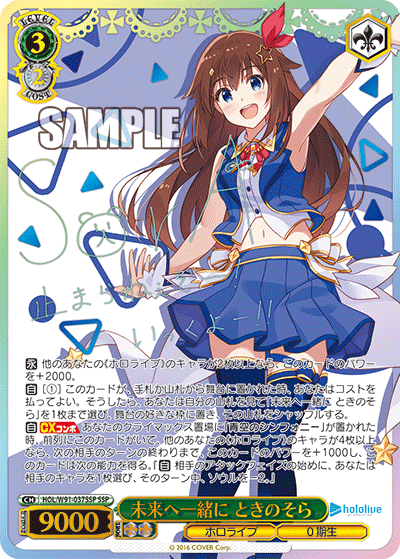
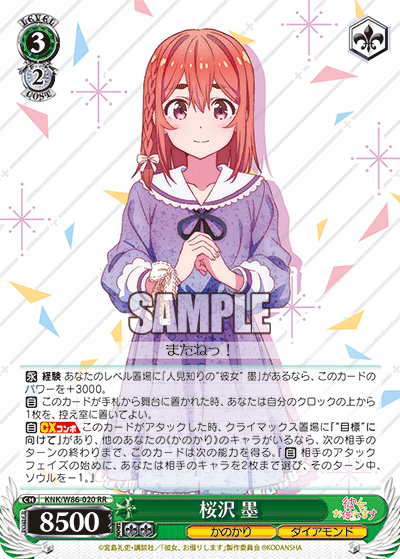
Traditionally, anti-damage has been more commonly referred to as neg-soul combos. That is to say that there were combos that would subtract soul from the opposing character, thus reducing their damage output or rendering it to zero entirely. Now there are some problems with these cards and also the design overall. Beginning with the design, anti-damage at its core is not fun. Dealing damage is a quintessential part of the game, and there are many cards that do rely on the mechanic of dealing damage and cancelling, both of which are negated by this design entirely. Anti-damage also promotes stalling game play and relatively boring, uninteresting turns of repeated denial.
To combat this, Bushiroad has made some fair adjustments to anti-damage cards like those above. Anti-damage cards have some weaknesses to consider. Firstly, almost all of them are on characters that are at level three (this makes sense as most finishing abilities are also at level three). For anti-damage to be impactful, it generally needs to be employed at level two leading into the opponent’s turn while also performing their climax combo. The key problem here is that “leading into the opponent’s turn” while doing their climax combo and where fairness kind of settles in. Secondly, many of these cards have to stay on field because their effects are only persistent when they are on field. Thirdly, to be effective, often you need a full front row of the combo as well. Lastly, and probably the biggest caveat to running anti-damage combos is the fact that most don’t have a win condition. They do not push extra damage, so you are often left to running off-finishers (thus, breaking your own field) or win through vanilla swings.

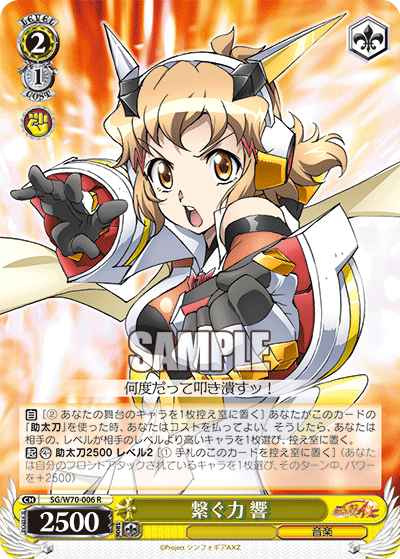

SG/W70-006R 繋ぐ力 響 (center)
PRD/W100-037S-SR 輝かしきアオハル アオイ (right)
In regard to point A and B, being that they have to safely navigate to your opponent’s turn while doing their climax combo, and then also living during your opponent’s turn, is something that can be countered using game designs and mechanics. For an anti-damage combo to have any function, it has to be on field, but it can be removed through anti-early play designs such as our guy Adachi here and anti-early play counters. Keep in mind that, even though most restrictions in the modern game are relatively negligible, they are conditions. Both Sora and Sumi have field conditions to activate their abilities, and if you were say to “trait counter” them, they could fail this condition and thus lose their anti-damage values entirely. In regard to the second point, while on the field, they have to stay on the field so blinkers like Aoi will reset the card, essentially turning them back into vanilla cards.
Additionally, since these anti-damage combos usually constitute the end game for most of their decks, these cards have to survive for multiple turns. You can beat over them if need be, even if you do lose out on the soul output.
Now both Sora and Sumi also have their own respective merits. Sora can annoyingly spawn several copies of herself for cheap, and with her deck, she has access to back row power and also a Pina profile card to keep her alive. Sumi comes in play early through an event that gives her protection (hexproof) and prevention from being reversed by AUTO abilities. Sumi also heals, something Sora does not do, potentially allowing you to keep yourself at level two for several turns.
The third and last points are also important to note. For these decks, the employment of a full field or near full field of anti-damage cards is essential. There is no back-up plan. These decks are do-or-die when it comes to negating damage, and one more thing to note, they are not almighty like Aqua is when it comes to reducing damage. You can technically overswing and still deal bits of damage if you can somehow pass over the minus soul effect.
That doesn’t necessarily mean effects like Guam are necessarily better or worse. Aqua is an almighty defence profile, essentially a Money counter on field, so there are no arguments there. Guam only reduces AUTO damage, so vanilla swings can still kill you. As for Sora and Sumi, they don’t prevent AUTO effects, so you can still die to those abilities which have become much more egregious long past both these cards’ printings.
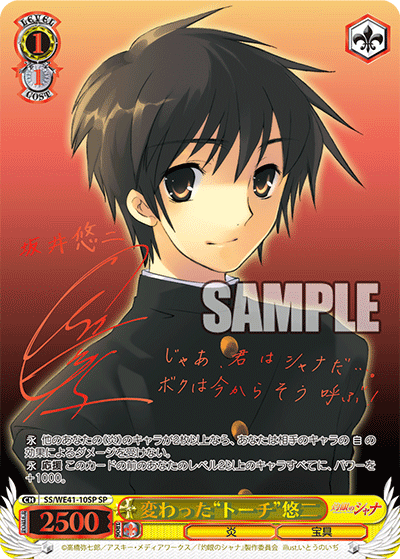
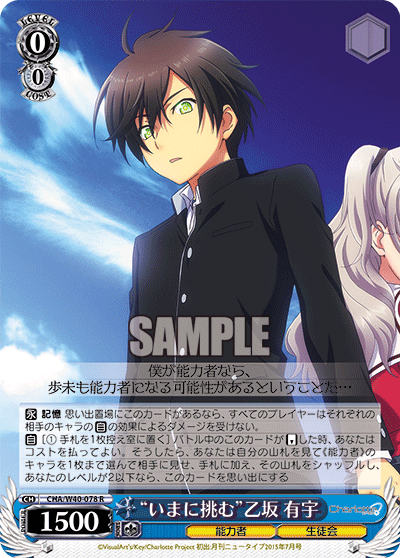
That brings us to the second topic of note: anti-damage supports. Anti-damage supports, for the most part, are still relatively rare. They don’t get printed often and for good reason. They are much stickier than most anti-damage combos since they often live in the backrow or in the case of Yuu, go to memory, and remain untouchable outside of a few cards (Yes, Yuu isn’t actually invincible).
The ones that generally stay on field are relatively one-sided. This is toxic as this disallows your opponents from performing game actions while you are still allowed to do so. Their downside is, unless they have the hexproof keyword, they can be removed through other abilities. This still typically costs your opponent resource, hindering their finishing abilities should they be gimped on resources. The other type, shown here through the infamous Yuu card from Charlotte, is a bilateral effect. This means that neither player is able to do AUTO damage abilities. This means that the Charlotte player is reduced to alternative means of dealing additional instances of damage such as clock kick or restand combos.
For this reason, most modern decks are almost always suggested to carry around some form of interaction should they end up dealing with one of these matchups. Additionally, some counterplay is good in general if it can apply to a larger variety of situations.
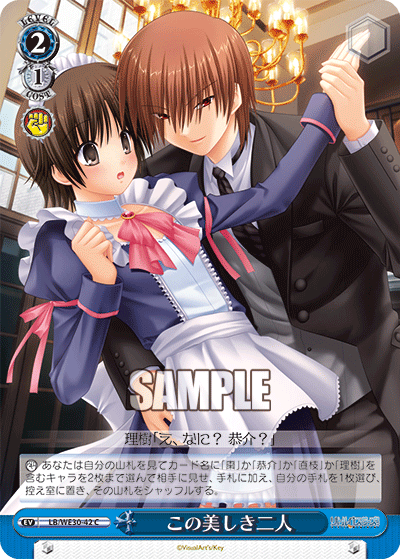
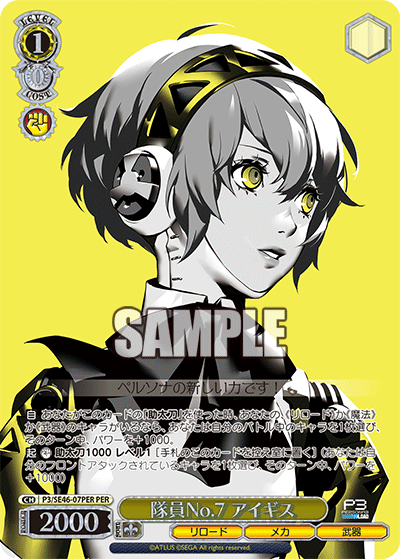
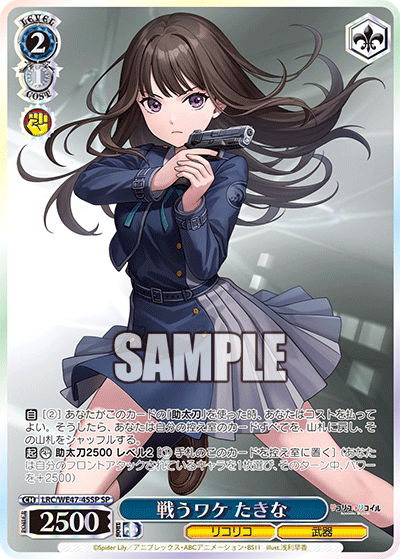
P3/SE46-07PER-PER 隊員No.7 アイギス (center)
LRC/WE47-45SP-SP 戦うワケ たきな (right)
Moving onto the topic of counters, it would be strange to think of counters, the English word meaning to provide some sort of reflective counterplay, isn’t really the quintessential “defensive” factor in the game anymore. Counters, in the modern game, aren’t usually ran for their “defensive” qualities but more so for the utility effects associated with them. Why is this the case? Power levels in Weiss are in an absurd state in the past half a decade.
Thanks to standby and other power creep measures, power levels on cards are usually bolstered heavily during a player’s turn, leaving little to no power during the opponent’s turn. The game has essentially become a game of “I have my turn, then you have yours” without any direct interaction. In my opinion, this is a shame because I think counters provide a lot of interaction and fun associated with that. Making the mechanic obsolete takes away a part of the game that I used to enjoy (to an extent). Another issue is that cards often push much more damage nowadays, meaning that even if your counter were to save a card, the card you saved may be less impactful given your transition to another level.
Are counters invalid? Not necessarily, but you shouldn’t be really be thinking that counters are primarily meant to preserve your board anymore. Ideally, counters provide double duty (in the best scenario) by providing utility and defending a card, but often, the utility is all you need even if the card you are trying to protect loses in power comparisons. We have another article here if you want to learn more about counters and counter usage.
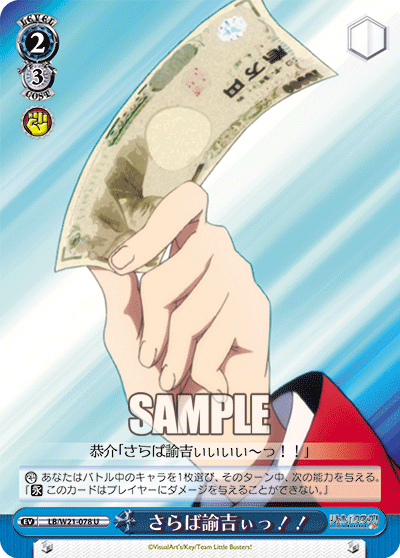
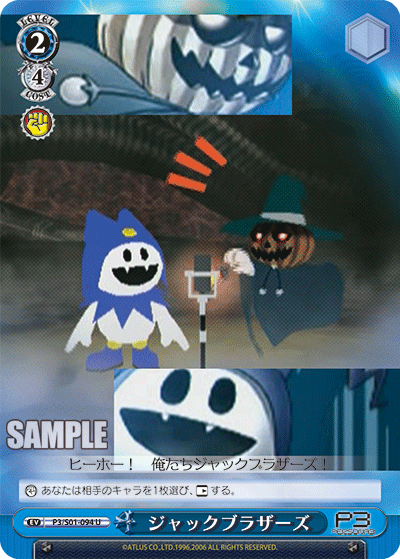
Despite the loss of importance in character counters or backups, event backups do remain a solid option for deck design. The key difference here is the power that is associated with an event backup. Being an event, meaning that these cards are generally harder to get in hand, grants them some more powerful abilities. The two most common defensive events are that of the money counter and rest counter shown here. We won’t be getting into too much detail over their effects. You can read about them here.
As good as these cards are, they share a common issue with that of character backups. Your opponent can simply side characters, negating battle, and thus preventing you from utilizing the backup. Furthermore, these backups do not prevent AUTO damage abilities that activate before trigger step. Given the vast majority of modern finishers play around on-attack triggers, you may well be dead before you can even employ your counter. This is also assuming you have the resources to play them and meet their conditions as well which can be relatively heavy.
So all-in-all, how do I feel about these cards and new combos? In all honesty, they are rather average. The complications that arise from their general design and the costs on many of these combos make it difficult to really measure their performance. They are also heavily match-up based. For instance, Guam will do literally nothing to any deck that restands or clock-kicks. They can also be interacted with, meaning that players can still attempt to out these decks. Lastly, these end-game cards also don’t usually have any offensive capabilities, meaning you aren’t pressured heavily by the amount of damage these cards do (keep in mind that Aqua does have a modular ability). In their current state of design, I do not think there’s anything wrong or needs to be corrected. However, if any of these downsides I’ve mentioned were to change, some revision may need to be made.
In addition, Sora was recently unlimited from the ban list, and that combo itself was quite consistent and annoying to deal with. And if that ends up returning as a problem, then we may have another discussion then. For now, given the circumstances and speed of the game, along with all the modern counterplay options, anti-damage just feels mediocre at best.
What these cards do show rather is that Bushiroad is considering and thinking about the reality of the endgame monsters it has created in the last decade. Anti-damage feels like more and more of a necessity or want that players have simply due to how fast the game is and how damaging the modern endgame can be. This prevents a lot of players from really showcasing their decks and exploring all the unique and cool things their decks can do since they simply don’t have enough turns to do set-up or do so.
What I perceive is that these new anti-damage profiles are more of a band-aid for the more obvious concerning problem of the power of modern day finishers. Perhaps, rather than paying more attention to these anti-damage cards, Bushiroad should start reconsidering their own design and approach to endgame finishing damage instead.